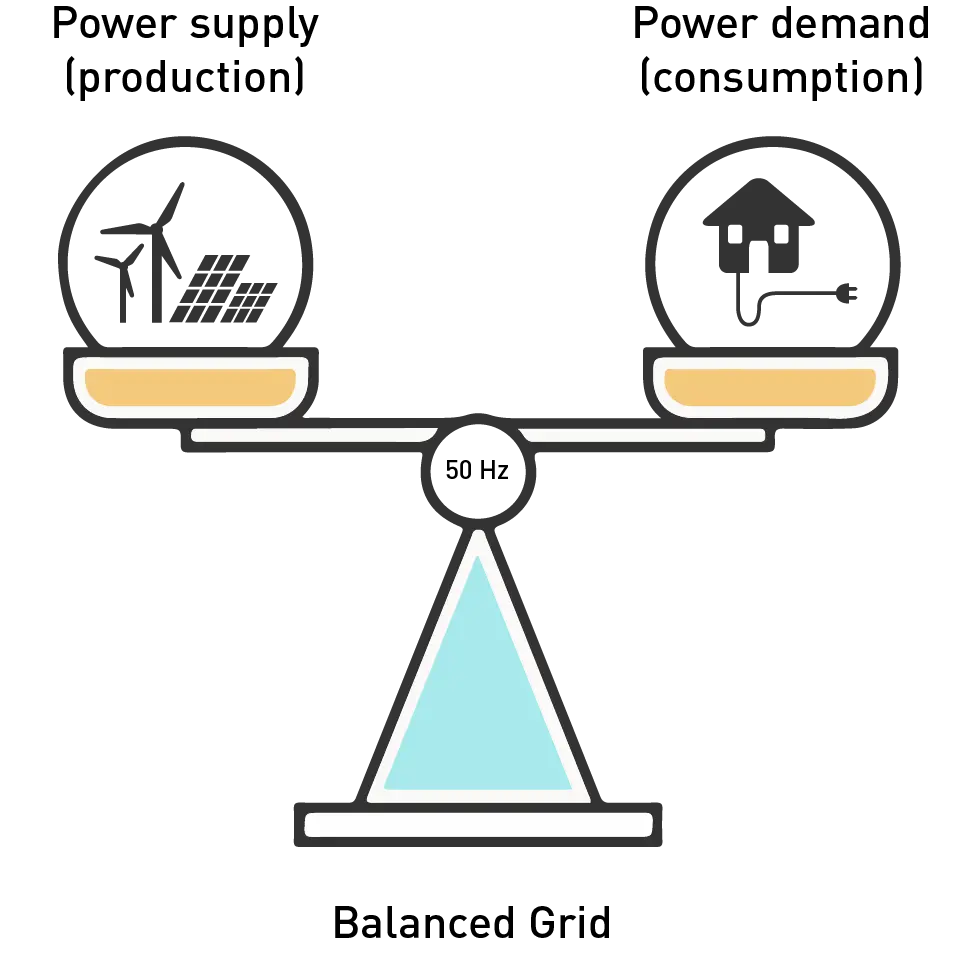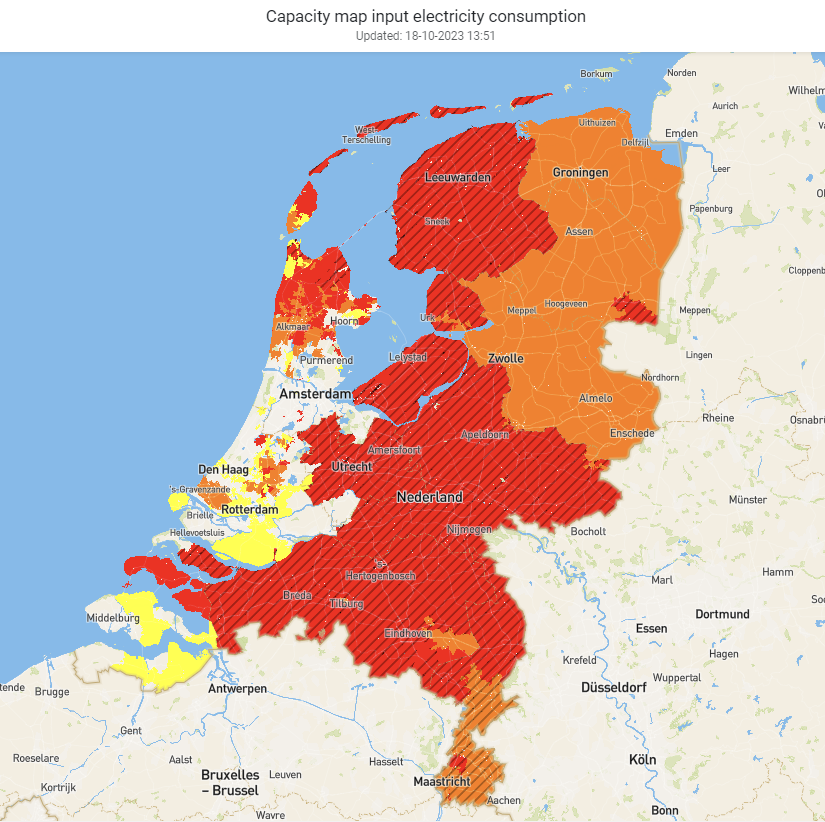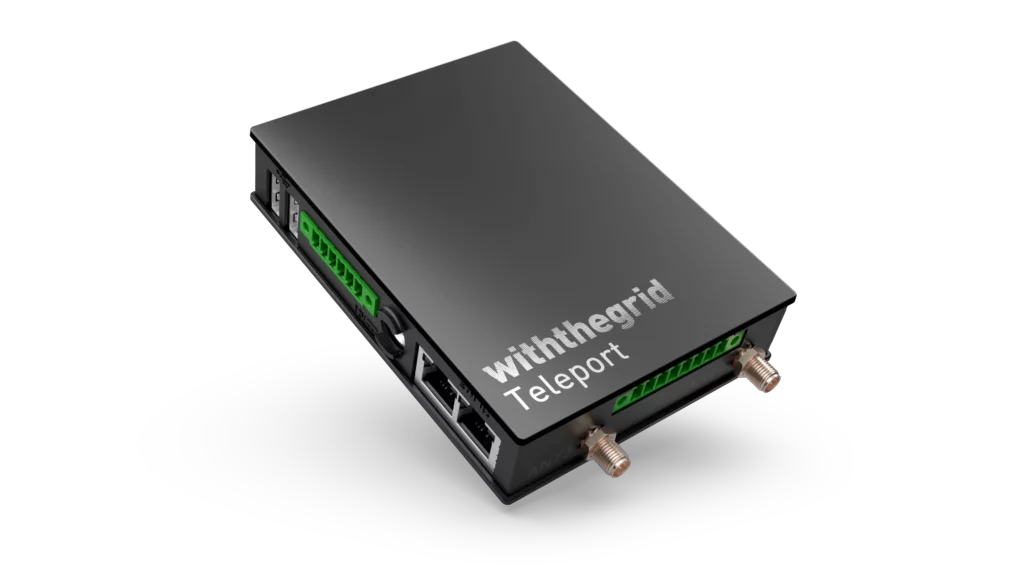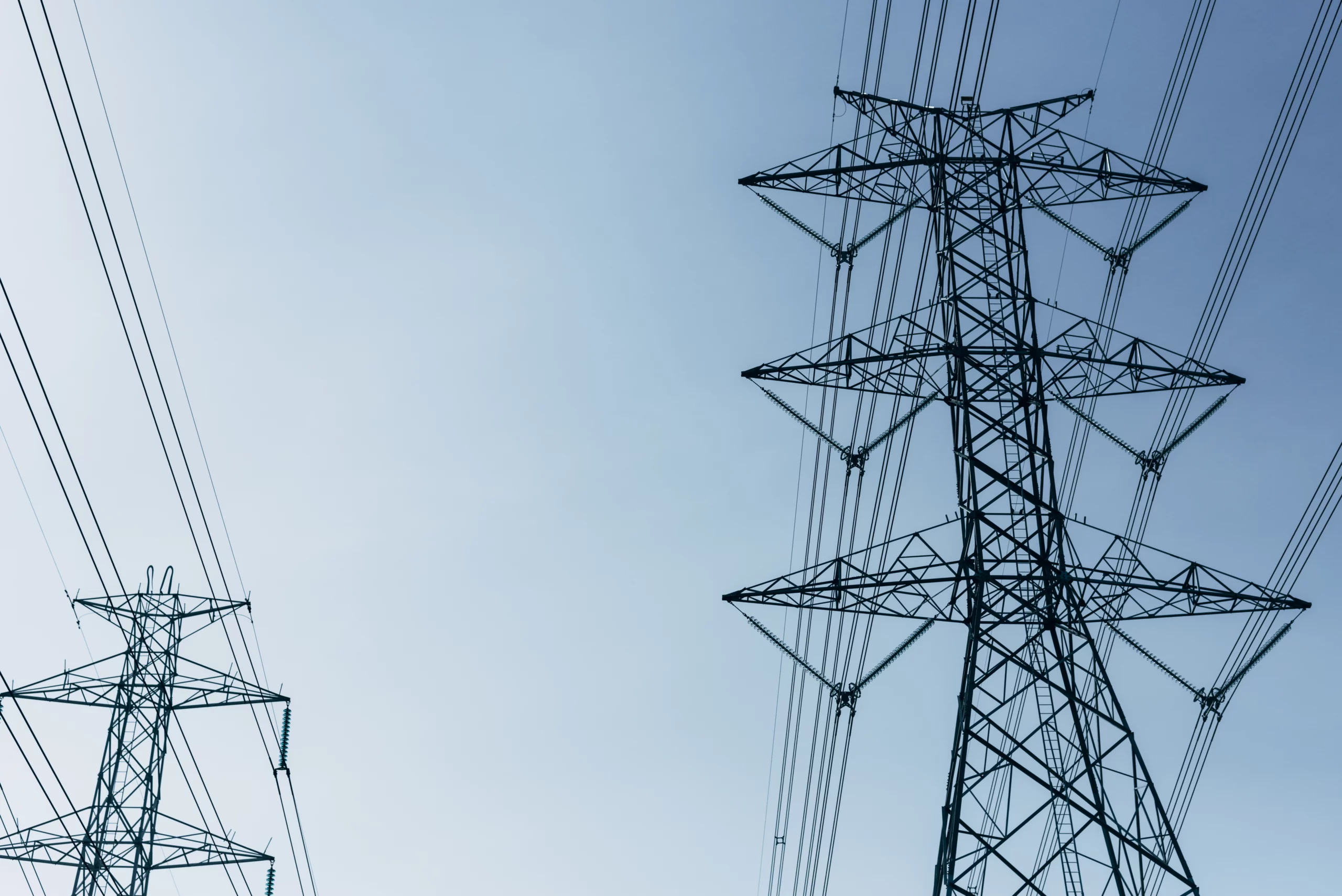Home → Blog → Congestion management → Grid balancing & congestion management: differences and potential conflicts

By Anaïs Wampack
Published the 8th of November, 2023
The Dutch energy industry is in the midst of a substantial transformation, much like many others in Europe. The incorporation of renewable energy sources, especially wind and solar, has introduced more unpredictability into the system. These fluctuations in expected renewable energy generation can lead to increased grid imbalances or congestion, which can pose issues for conventional energy management methods.
In response to these challenges, network operators have two vital functions: grid balancing and congestion management. Both of these functions involve making adjustments to the planned and actual power generated or consumed, and they are crucial for ensuring a stable and dependable energy supply. However, they serve different roles and can sometimes come into conflict.
In this article, we will delve into the concepts of balancing and congestion management, exploring their differences and potential conflicts within the Dutch energy system.
1. Defining grid balancing and congestion management
1.1. Grid balancing: ensuring synchronized supply and demand
What is balancing?
The primary goal of balancing is to maintain the grid frequency at a constant 50 Hertz. This frequency relies on the delicate equilibrium between power supply (generation) and power demand (consumption).
When there is an excess of power generation compared to consumption, the frequency goes up. Conversely, if there’s not enough power to meet demand, the frequency goes down. This disparity between generation and consumption is referred to as “imbalance”.
Thus, to prevent imbalance, electricity supply and demand must be continuously matched in real-time. Maintaining this equilibrium is crucial for grid stability, as any imbalance (+/- 0.2 Hz) can lead to blackouts and other disruptions.

In the Netherlands, a system of ‘balancing responsibility’ is established to maintain grid balance. This responsibility rests with the Balance Responsible Parties (BRPs). However, if the BRPs, and the market, fail to maintain this balance, the Transmission System Operator (TSO) must intervene.
How does balancing work?
Every supplier or buyer connected to the grid must be associated with a BRP. The BRPs are then responsible for balancing supply and demand within their specific portfolios.
To uphold the ‘balancing responsibility’ principle, the BRPs are obligated to provide TenneT with information about their planned production, consumption, and trades for the following day through e-programmes. Deviations from this programme might happen, in which case the BRPs must rectify them before the end of the corresponding imbalance settlement period (ISP). This period, lasting 15 minutes, is when imbalances are calculated and settled.
To maintain balance in their portfolios, BRPs have the possibility to trade energy surplus or deficit with other BRPs on markets. In case of a remaining imbalance, BRPs face financial consequences.
What if the grid is still not balanced?
If the summed imbalances of the BRPs cause a general change in the frequency, TenneT steps in and address the issue using “balancing products“, also known as “balancing resources”. These products are procured in advance, but are only used reactively – in real-time when imbalances occur.
These products are facilitated by participants called Balancing Service Providers (BSPs), who will steer their production/consumption to help stabilize the grid frequency. In the Netherlands, there are three main types of balancing products:

- Frequency Containment Reserves (FCR): Also known as the “primary reserve,” it automatically activates in less than 30 seconds in case of imbalance and remains active up to 15 minutes.
- Automatic Frequency Restoration Reserve (aFRR): Or the “secondary reserve”. It is activated by the TSO’s signal, must start within 30 seconds and has a full activation time of 15 minutes.
- Manual Frequency Restoration Reserves (mFRR): Referred to as the “tertiary reserve”. It must be manually activated within 10 minutes (for downward capacity) or 15 minutes (for upward capacity). From this moment, the capacity needs to be able to stay activated for at least 60 minutes.
1.2. Congestion management: mitigating grid overload
What is congestion management?
Congestion refers to situations where the local grid infrastructure experiences limitations in the transmission capacity. It happens when the flow of electricity is more than what the grid can handle without surpassing the thermal, voltage, and stability thresholds. There are multiples risks associated with it, from inflated operational costs to the risk of blackout.
In the Netherlands, TenneT manages congestion on the transmission grid (high voltage – 110 kV and above), while DSOs handle local distribution grids (below 110 kV).

(Netbeheer Nederland)
What are the different congestion management strategies?
The traditional approach to congestion management involves long-term grid reinforcement projects, involving significant capital investments in grid infrastructure expansion or upgrades (see announcement of record investments by DSOs of € 8bn until 2026).
However, this approach is not always sufficient to address congestion issues. Added to the slow process of such projects, the Dutch TSO and DSOs are facing multiple extra challenges, including the shortage of technical workers, the increase in raw materials prices, and the need to speed up provision of land, authorizations and procedures.
Thus, congestion needs to also be managed through other mechanisms, such as limitation contracts or redispatch.
Capacity Limitation Contracts
Capacity limitation contracts, also called “capaciteitsbeperkingscontract” (CBC) in the Netherlands, are agreements with > 1MW connected parties to limit their use of connection and transport capacity in exchange for a pre-defined financial compensation.
Grid operators can request this curtailment several days in advance, up to the morning before the expected congestion.
Redispatch
“Redispatch” involves grid operators requesting Congestion Service Providers (CSPs) to adjust their planned electricity feed-in or take-off after day-ahead market trading to alleviate congestion. For each adjustment requested, an opposite adjustment outside the congested area is necessary to maintain grid balance. The goal is to shift generation or consumption from congested areas to non-congested ones.
In the Netherlands, redispatch is market-based, and occurs via two market platforms:
- RESIN: Reserve for Other Purposes (ROD)
In case of congestion, TenneT can deploy Reserve Power Other Purposes – or “Reservevermogen Overige Doeleinden” (ROD) via a system called RESIN. For ROD, Tennet is the single buyer, and the product is location-specific.
Market participants with a connection capacity of 60 MW or higher are required to submit bids to this system (Netcode Article 9.19). For those of a capacity of more than 1 MW but less than 60 MW, submitting bids is optional, although this is likely to also become obligatory.
Participants are allowed to both bid for redispatching and balancing. However, if the bid for redispatching is used, participants need to withdraw their order for balancing. The awarded redispatch bids receive energy prices “pay-as-bid”.
- GOPACS
In 2019, the DSOs (Stedin, Liander, Enexis and Westland Infra), TenneT and the intraday trading platform ETPA developed and launched GOPACS. The platform is used both by TSO and DSOs.

Using the existing energy trading platforms from ETPA and EPEX SPOT, participants can place intraday bids. The buy and sell orders that are not matched and that can be used for redispatch are forwarded to GOPACS. Then, grid operators can adjust the production/consumption capacity of those participants based on their intraday bid.
In order to not affect the grid balance, the order is matched with an opposite order from a market party outside the congested area.
If congestion issues persist despite these measures, grid operators can manually contact asset owners to perform redispatch.
2. Differences & conflicts between balancing and congestion management
2.1. Differences
Balancing and congestion management share some similarities, particularly in their predominantly market-driven approaches. However, understanding their distinct characteristics is crucial to identify potential conflicts between them. Here, we outline their primary disparities:
- Geographical Scope: Balancing resources are not locally bound and can be deployed anywhere in the Dutch network. In contrast, congestion happens locally, and its management is also location-dependent as the effectiveness of a redispatch unit mainly correlates with its proximity to the congested point. Thus, there is also a technical merit order for the bid, not a purely economic one.
- Timeframe: Congestion management involves a continuous process, extending from long-term planning to real-time actions. Balancing, on the other hand, occurs in predetermined time frames such as day-ahead, intraday, or real-time.
- Activation: While both congestion management and balancing require a fast activation of their products, the activation of redispatch resources is often more extended in time than the activation of balancing products.
- Procurement: Procurement of balancing products occurs through dedicated markets, whereas redispatch procurement varies from capacity contracts to market-driven approaches.
2.2. When balancing and congestion management conflict
Balancing and congestion management have a common goal: ensuring a stable, reliable, and efficient energy supply. However, the interconnectedness of the energy system and the need for flexibility means that actions taken for one purpose can conflict with the other. For instance:
- A balancing service might not be provided by a generator because it’s used for redispatch. Balancing and redispatch are then competing for the same limited flexibility resources.
In other cases, balancing and redispatch resources might cancel each other out:
- A balancing product might not be activated due to requirements to reduce generation for congestion management purposes.
- A balancing product might, by being activated, increase the peak load and aggravate local congestion.
- Imbalance arises due to the curtailment of an asset for congestion management, and not enough balancing products were requested.
For a more concrete example, take the case of a surplus of electricity due to a lot of offshore wind. On the market, the dynamic prices will fall sharply for consumers. Based on this incentive, they might decide en masse to charge their home battery, car, boiler. While the demand will match the supply (grid balanced), this peak can cause local congestion.
Thus, to prevent conflicts, coordination is essential to enhance the compatibility and resource allocation efficiency of both systems.
3. The Teleport: empowering all stakeholders
At Withthegrid, we believe that in order to realize a sustainable energy system, we need to make renewable energy assets ‘flexible’. When assets like wind turbines, solar panels, and batteries are flexible, they not only help the energy grid to stay balanced and non-congested, but also become more profitable. That’s the reason we developed the Teleport – your gateway to unlock the full potential of your energy assets.
With the Teleport, you can connect your assets to the cloud, and unlock new possibilities such as curtailing, trading on balancing markets, using an EMS, dynamically managing load, or allowing direct DSO control.

By making your energy assets flexible, you’re not just ensuring the stability of the grid. You’re also transforming asset control into a collaborative, economically viable venture for yourself and all other involved parties.
→ Read more about the Teleport here.
Conclusion
As the Dutch energy industry tackles the challenges of decarbonization, efficient grid balancing and congestion management become increasingly important. While these functions have differences, it is imperative for stakeholders, market participants, and regulators to collaborate closely to harmonize these systems and ensure a reliable energy supply for the future.
Summary
- Balancing:
- Maintaining grid frequency at 50 Hertz is crucial for its stability.
- Imbalance occurs when the demand and supply of power don’t match.
- Balance Responsible Parties (BRPs) are responsible for maintaining balance within their portfolio. For that, they can trade with other BRPs. In case of imbalance, they have to pay.
- If BRPs fail to maintain balance, TenneT intervenes with balancing products (FCR, aFRR, mFRR).
- Congestion management:
- Congestion occurs when local infrastructure can’t handle the electricity flow.
- Managed by TenneT for transmission grid (110 kV and above) and DSOs for local distribution grids (below 110 kV).
- Traditional approach involves grid reinforcement; but slow process and facing challenges.
- Congestion is thus (mainly) managed through capacity limitation contracts and redispatch (market-based).
- Redispatch platforms: RESIN (ROD) and GOPACS
- Differences between balancing and congestion management:
- Geographical scope: Balancing resources not locally bound; congestion management location-dependent.
- Timeframe: Congestion management from long-term planning to real-time; balancing in predetermined time frames.
- Activation: Redispatch activation more extended than balancing products.
- Procurement: Balancing products through dedicated markets; varied procurement approaches for redispatch.
- Conflicts between balancing and congestion management:
- Balancing and redispatch compete for limited flexibility resources.
- Actions taken for one purpose can conflict with the other.
- Conclusion:
- Efficient balancing and congestion management are vital for a stable energy supply.
- Coordination essential to prevent conflicts; stakeholders must collaborate for harmonizing systems and ensuring a reliable energy supply in the future.

specialized in smart flexibility solutions
Want to unlock the flexibility of your assets?
Withthegrid is here to assist you – contact us today!
Or check the use cases of the Teleport.
